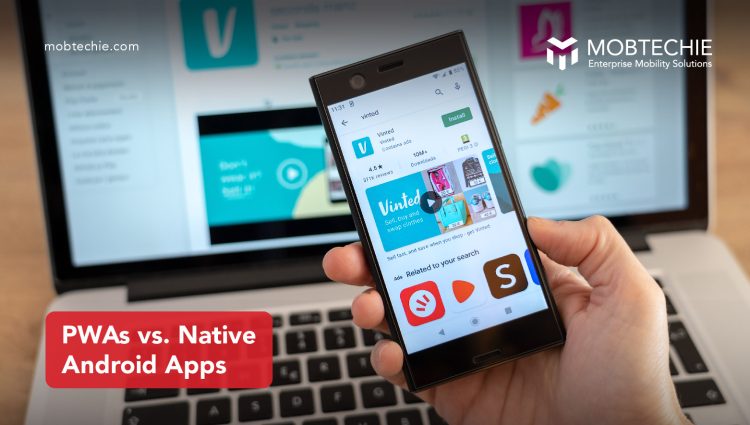Introduction
In the dynamic landscape of mobile app development, businesses often find themselves at a crossroads when deciding between Progressive Web Apps (PWAs) and Native Android Apps. Both options offer distinct advantages and cater to different needs, making the choice a crucial one for any app development project. Whether you’re a mobile app development company in Kochi or anywhere else, understanding the nuances of each approach is essential to deliver optimal solutions to clients.
What are Progressive Web Apps (PWAs)?
Progressive Web Apps (PWAs) are web applications that utilize modern web capabilities to deliver an app-like experience to users. These apps are built using standard web technologies such as HTML, CSS, and JavaScript, but they come with additional features that enable them to function similarly to native apps. PWAs are designed to be responsive, reliable, and engaging, offering offline support, push notifications, and seamless installation directly from the web browser.
Native Android Apps: Power and Performance
On the other hand, Native Android Apps are developed specifically for the Android platform using programming languages like Java or Kotlin. These apps are known for their superior performance, tight integration with device hardware, and access to native features and APIs. Native Android Apps can leverage the full potential of the Android ecosystem, providing smooth user experiences and high levels of customization.
Key Differences: PWAs vs. Native Android Apps
- Development Approach:
-
-
- Mobile app development companies in Kochi often face the dilemma of choosing between PWAs and Native Android Apps. While PWAs offer the advantage of a single codebase that works across different platforms, native Android apps require separate development efforts for each platform.
-
- Performance and User Experience:
-
-
- Native Android Apps excel in terms of performance and user experience due to their ability to leverage platform-specific features and optimizations. They offer smoother animations, faster load times, and seamless interactions, which can be critical for demanding applications.
- PWAs, although improving rapidly, may still lag behind native apps in terms of performance, especially for complex applications or graphics-intensive tasks.
-
- Offline Functionality:
-
-
- PWAs have a significant advantage when it comes to offline functionality. They can cache resources and content, allowing users to access certain features even without an internet connection. This feature is particularly beneficial for users in areas with poor network connectivity.
- Native Android Apps can also support offline functionality, but developers need to implement specific mechanisms to achieve this, which may require additional effort.
-
- Distribution and Installation:
-
- PWAs are easily accessible through a web browser, and users can install them directly from the website with just a few clicks. This frictionless installation process eliminates the need to visit an app store, making it convenient for users to discover and install PWAs.
- Native Android Apps are typically distributed through the Google Play Store, which provides a centralized platform for app discovery and installation. While this ensures a certain level of visibility and trust, it also means adhering to Google’s policies and guidelines.
Choosing the Right Approach for Your Project
When it comes to choosing between PWAs and Native Android Apps, there is no one-size-fits-all solution. The decision depends on various factors such as the nature of the app, target audience, budget, and timeline. Here are some considerations to keep in mind:
- Scope and Complexity: For simple applications with basic functionality, PWAs may offer a cost-effective solution with faster development cycles. However, for complex applications that require high performance and extensive device integration, native Android development may be the preferred choice.
- Target Audience and Reach: Consider the demographics of your target audience and their preferred devices. If you’re targeting users who predominantly use Android devices, investing in native Android development may yield better results in terms of user engagement and satisfaction.
- Budget and Resources: Evaluate your budget constraints and available resources, including expertise in web development and native Android development. While PWAs may require less initial investment and maintenance, native Android development may offer long-term scalability and performance benefits.
Conclusion
In the evolving landscape of mobile app development, choosing the right approach between Progressive Web Apps (PWAs) and Native Android Apps is crucial for the success of any project. While PWAs offer cross-platform compatibility and ease of distribution, Native Android Apps provide superior performance and user experience. Whether you’re a mobile app development company in Kochi or anywhere else, understanding the strengths and limitations of each approach is essential to deliver optimal solutions that meet the needs of your clients and users.
Mobtechie Labs
mobile app development company kochi app development company in kochi android app development company in kochi android app development company cochin






